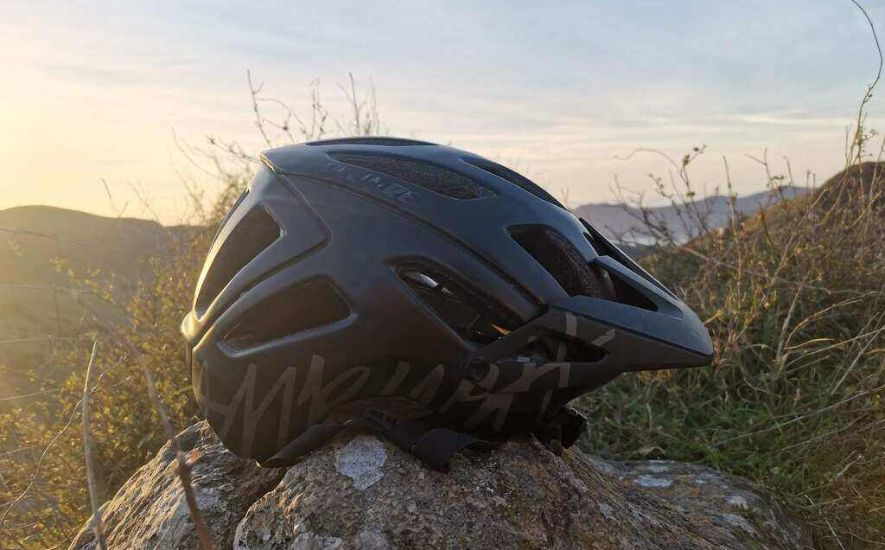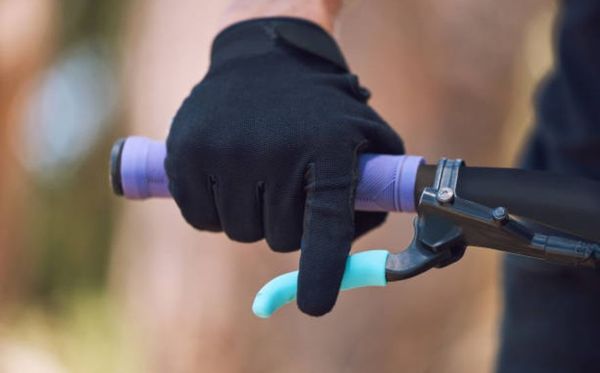Bike helmets are an essential piece of protective gear for anyone who loves to ride. They're designed to protect your head in case of an accident and potentially save your life. But did you know that bike helmets have a shelf life, and they can expire?
Yes, that's right! Just like any other piece of safety equipment, bike helmets have a finite lifespan and need to a helmet replacement after a certain period. The question is, how do you know when your helmet is no longer providing the protection it was designed to give?
In this article, we'll delve into the topic of whether an old bicycle helmet expires and what you need to look for to determine if it's time for a new one. We'll also discuss why it's crucial to replace your helmet and why you should never wear an expired helmet.
Whether you're a seasoned rider or a beginner, this article is for you. By the end of it, you'll have a better understanding of the significance of helmet expiration and how to ensure your head is protected every time you ride.

Materials used in bike helmets
Bike helmets are designed to protect the rider's head from injury in the event of an accident. A bike helmet's protective capabilities depend on the materials used in its construction. In this note, we will explain the materials used in bike helmets and their respective functions.
EPS (Expanded Polystyrene) Foam
EPS foam is the primary material used in bike helmets to absorb impact. It is a lightweight and durable material that crushes upon impact, absorbing the energy and reducing the risk of injury to the rider's head. EPS foam is used in the interior of the helmet, with a thicker layer around the sides and back of the head and a thinner layer at the top.
Polycarbonate Shell
The polycarbonate outer shell is a thin, hard plastic layer that covers the EPS foam. It helps to spread the impact evenly across the surface of the helmet, adding extra protection and preventing the helmet from cracking or breaking upon impact. The polycarbonate helmet shell also helps to protect the EPS foam from damage during normal use.
Straps and Buckles
The chin strap and buckles of a motorcycle helmet are typically made of nylon or polypropylene, which are strong and durable materials that can withstand the wear and tear of regular use.
The straps and buckles are adjustable, allowing the rider to customize the fit of the helmet for maximum comfort and security. The buckle should be located under the chin and fastened securely, with the straps forming a “V” shape around the ears.
Technology Used in Bike Helmets
Bike helmets are essential for riders to protect themselves from head injuries while riding. With technological advancements, bike helmets have become much more sophisticated, providing better protection and comfort. In this note, we will discuss the various technologies used in bike helmets.

Fit System
The fit system is an essential component of a bike helmet, as it determines how well the helmet stays in place during a crash. Many helmets use a dial-adjust fit system that allows riders to adjust the fit around the head, while others use a more traditional strap and buckle system.
MIPS
MIPS, or Multi-directional Impact Protection System, is a technology that helps reduce the risk of head injury in the event of a crash. The MIPS system consists of a low-friction layer that allows the helmet to rotate slightly around the head, reducing the amount of force transmitted to the brain.
LED Lights
Some bike helmets come with LED lights, making the rider more visible to motorists and other riders. The lights can be set to steady or flashing mode, and some helmets even have sensors that detect ambient light and adjust the brightness accordingly.

Factors Affecting the Helmets
A helmet is a protective headgear that is used for various activities such as cycling, riding a motorcycle, playing sports, and construction work. The effectiveness of a helmet depends on several factors, including its design, material, and the way it is used.

Material
One of the most important factors affecting helmets is the material used in their construction. Helmets are made of polycarbonate, polystyrene, and carbon fiber.
Each material has its own properties that impact the helmet's strength, weight, and flexibility. For example, polycarbonate is lightweight and offers excellent impact resistance, while carbon fiber is lightweight and offers excellent energy absorption.
Design
Another important factor affecting helmets is their design. The design of a helmet determines how well it fits on the head, how well it provides protection, and how comfortable it is to wear. For example, a helmet with a round shape is more aerodynamic and reduces wind resistance, while a helmet with a pointed shape is better suited for activities that require more ventilation.
Size and Fit
The size and fit of a helmet are also critical factors that impact its effectiveness. A too-small or too-big helmet will not provide adequate protection, as it will not stay in place in the event of an impact. A helmet that is too tight will also be uncomfortable, while a helmet that is too loose may slide around and provide inadequate protection.
Ventilation
Ventilation is another important factor affecting helmets, as it affects the comfort of the wearer. A well-ventilated helmet provides sufficient air flow to keep the head cool and prevent overheating. On the other hand, a poorly ventilated helmet will cause discomfort and may increase the risk of heat exhaustion.
Certification
Finally, the certification of a helmet is also a critical factor that affects its effectiveness. A helmet that has been certified by a reputable organization such as the Snell Memorial Foundation or the Consumer Product Safety Commission has been tested to ensure that it meets specific safety standards.
Signs indicating a bike helmet has reached its expiration
Like any other protective gear, bike helmets have a limited lifespan and must be replaced periodically to ensure maximum protection. In this note, we will discuss the various signs indicating a bike helmet has expired.
Age
Age is one of the most straightforward signs that a bike helmet has reached its expiration. Most helmet manufacturers recommend replacing a bike helmet every three to five years, regardless of the amount of usage it has received. This is because, over time, the helmet's materials can weaken, leading to reduced protective capabilities.
Cracks and Dents
If a bike helmet has visible cracks or dents, it should be replaced immediately, even if it hasn't reached its intended lifespan. Cracks and dents can weaken the helmet's structure, reducing its ability to protect the head in a crash. Any helmet that has been involved in a significant impact should also be replaced, as it may have been damaged beyond repair.
Fading or Degradation of Material
Another sign that a bike helmet has reached its expiration is fading or degradation of the material. Exposure to sunlight, heat, and other environmental factors can cause the helmet's material to break down, reducing its protective abilities. If the helmet's material is faded, brittle, or shows signs of cracking, it's time to replace it.

Safety risks posed by wearing an expired helmet
Wearing a helmet while riding a motorcycle or bike or participating in any other high-speed activity is crucial to prevent head injury. However, wearing an expired helmet can be just as dangerous as not wearing one.
A helmet's effectiveness is limited over time. With exposure to environmental factors such as sunlight, temperature changes, and moisture, the materials in the helmet can deteriorate and lose their protective properties.

Loss of Protective Properties: Expired helmets are made of materials such as foam and plastic that break down over time and lose their protective properties. This can make the helmet less effective in absorbing impacts and providing adequate protection to the head and neck.
The loss of protective properties can be especially dangerous in the event of a crash, as the helmet may fail to provide adequate protection, leading to serious head and neck injuries.
Compromised Structural Integrity: As the helmet materials break down over time, the structural integrity of the helmet may also be compromised.
This can make the helmet more prone to cracking or breaking upon impact, potentially leaving the head and neck unprotected in the event of a crash. In addition, an expired helmet may not fit properly, which can also compromise its structural integrity and effectiveness.
Steps that can be taken to extend the lifespan of a bike helmet
Bike helmets are an essential piece of protective gear for cyclists. However, with frequent use and exposure to various elements, the lifespan of a bike helmet can be reduced. Here are some steps that can be taken to extend the lifespan of a bike helmet:
Proper Storage: When not in use, it's important to store the helmet in a dry, cool place, away from direct sunlight and heat sources. This will prevent the helmet from becoming brittle, which can cause it to crack and weaken over time.
Avoid Impacts: One of the main ways to reduce the lifespan of a helmet is by experiencing impacts. To extend the lifespan of your helmet, avoid impacts whenever possible. This can include avoiding obstacles, riding in a safe and controlled manner, and avoiding falls.
Cleaning: Regular cleaning can help maintain the integrity of the helmet. Dirt, grime, and sweat can cause the helmet to weaken over time, so it's important to clean it regularly using a soft cloth and mild soap. Avoid using harsh chemicals, as they can damage the helmet.

Importance of replacing a bike helmet after a significant impact
After a significant impact, a helmet's protective capabilities may be compromised, making it crucial to replace it. In this note, we will discuss the importance of replacing a bike helmet after a significant impact.

Damage to the helmet: A significant impact can cause damage to the helmet's structure and materials, reducing its ability to protect the head in future accidents.
The impact can cause cracks, dents, or other visible damage to the helmet, making it essential to replace it. The damage may not be immediately visible in some cases, but it can still affect the helmet's protective capabilities.
Loss of protective properties: Helmets are designed to absorb and distribute the energy from a crash, reducing the risk of injury to the head.
After a significant impact, the helmet's protective properties may be diminished, making it essential to replace it. The helmet may also lose its ability to fit the head properly, reducing its overall protective capabilities.
Frequently Asked Questions (FAQs)
Here are the most common questions people have asked about the longevity of bike helmets and when you should replace your current one.
How many years do bike helmets last?
Typically, bike helmets have a lifespan of 3 to 5 years. However, this lifespan can be shortened by factors such as frequent usage, exposure to sunlight and extreme temperatures, and physical damage such as cracks or dents. It's also recommended to replace a helmet after a significant impact, even if it appears to be undamaged.
How do you tell if a helmet is expired?
A helmet typically has a lifespan of 3 to 5 years. The expiration date of a helmet can usually be found on a sticker inside the helmet or moulded into the foam liner. If the helmet does not have a date of manufacture or expiration, it is best to replace it.
Over time, the protective materials in a helmet can deteriorate and lose their effectiveness, making it important to replace an expired helmet. In addition to checking the expiration date, it is also important to inspect the helmet for any signs of wear and tear, such as cracks or dents in the shell or liner or frayed straps.
If the helmet has been involved in a significant impact, it should also be replaced, even if it appears to be undamaged. Always prioritize safety and replace your bicycle helmet if in doubt.
Can helmets go out of date?
Yes, helmets can go out of date and become obsolete over time. The lifespan of a helmet is typically around five years. After that period, the materials in the helmet may start to deteriorate and become less effective in protecting the head in the event of an impact.
The performance standards for helmets also change over time as new research becomes available and technology advances. This means that older helmets may not meet the current safety standards and may be less effective in protecting the head.
It's important to replace helmets after a significant impact, even if it's within the 5-year period, and to regularly check the expiration date to ensure the helmet still provides adequate protection.
Do helmets degrade over time?
Yes, helmets can degrade over time. Exposure to sunlight, heat, humidity, and chemicals can weaken the materials in a helmet, reducing its ability to protect your head in an accident. Additionally, repeated impact, such as dropping the helmet, can cause internal damage that may not be visible from the outside.
For these reasons, most helmet manufacturers recommend replacing a helmet after a certain period of time, typically between 3 and 5 years, or after a significant impact, even if the helmet appears to be in good condition. It's important to check your helmet regularly for signs of degradation and replace it when necessary to ensure maximum protection.
Conclusion
In conclusion, bike or bicycle helmets have a limited lifespan, and it's important to understand when to replace them. Though there may not be an official expiration date, factors such as age, wear and tear, and exposure to the elements can impact their effectiveness in protecting your head during a fall.
Regularly inspecting your helmet and replacing it if necessary will give you the peace of mind that you're properly protected while riding your bike. So, please don't wait until it's too late; get yourself a new helmet and enjoy a safe and happy ride!










